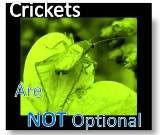What to do when cicadas crash your outdoor wedding? Embrace the buzz:
And remember: At the very least, cicadas make for a memorable wedding. “It was actually quite fun to lean into the cicada theme,” [Lauren] Migaki said. “My little brother wore a cicada bolo tie; our favors were cicada-shaped chocolates with caramel pop rocks; and I donned a pair of gold cicada earrings for the reception in our backyard.”
“I loved hearing the noise of them in the trees above us,” she added, “feeling like we had hundreds of wedding guests.”

